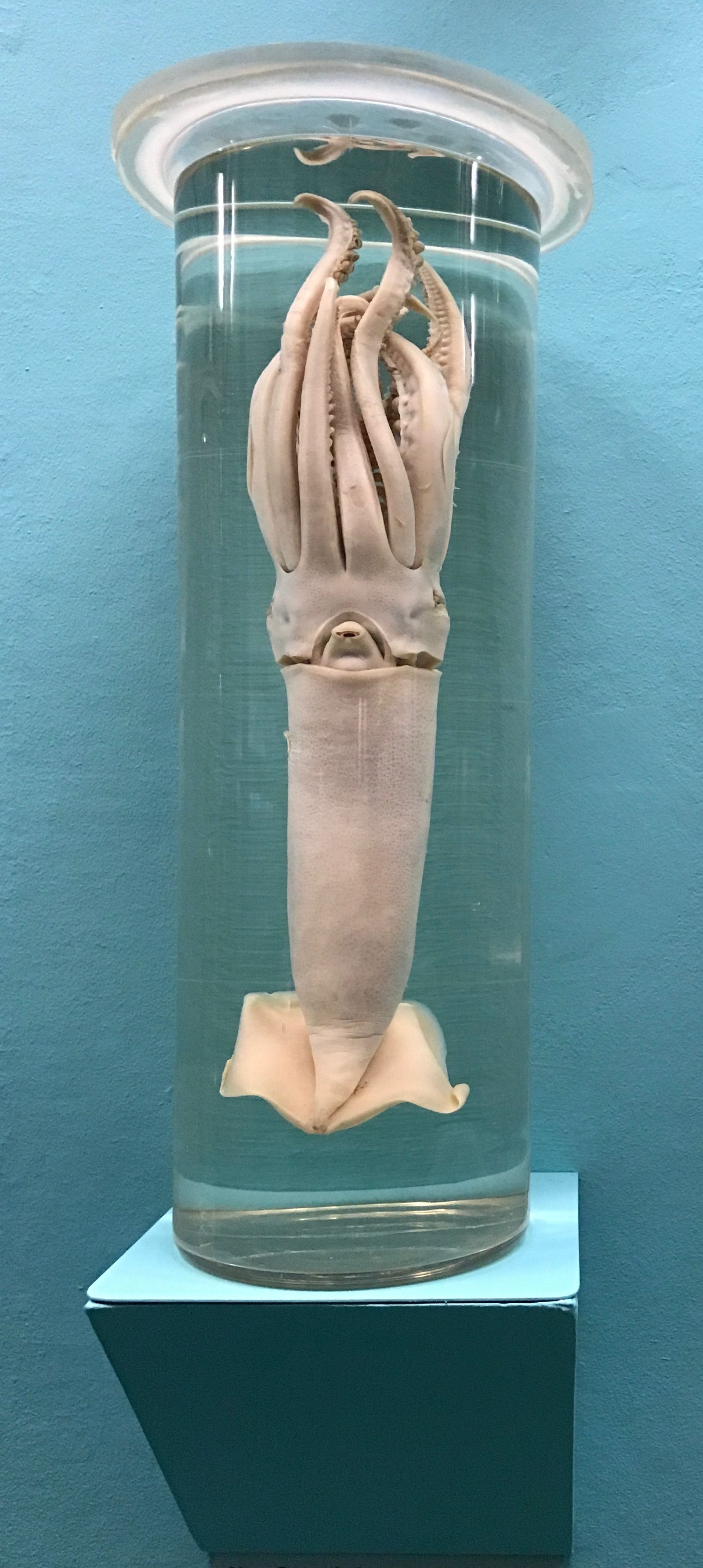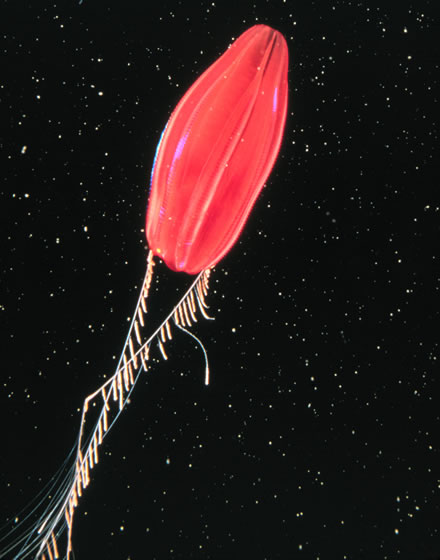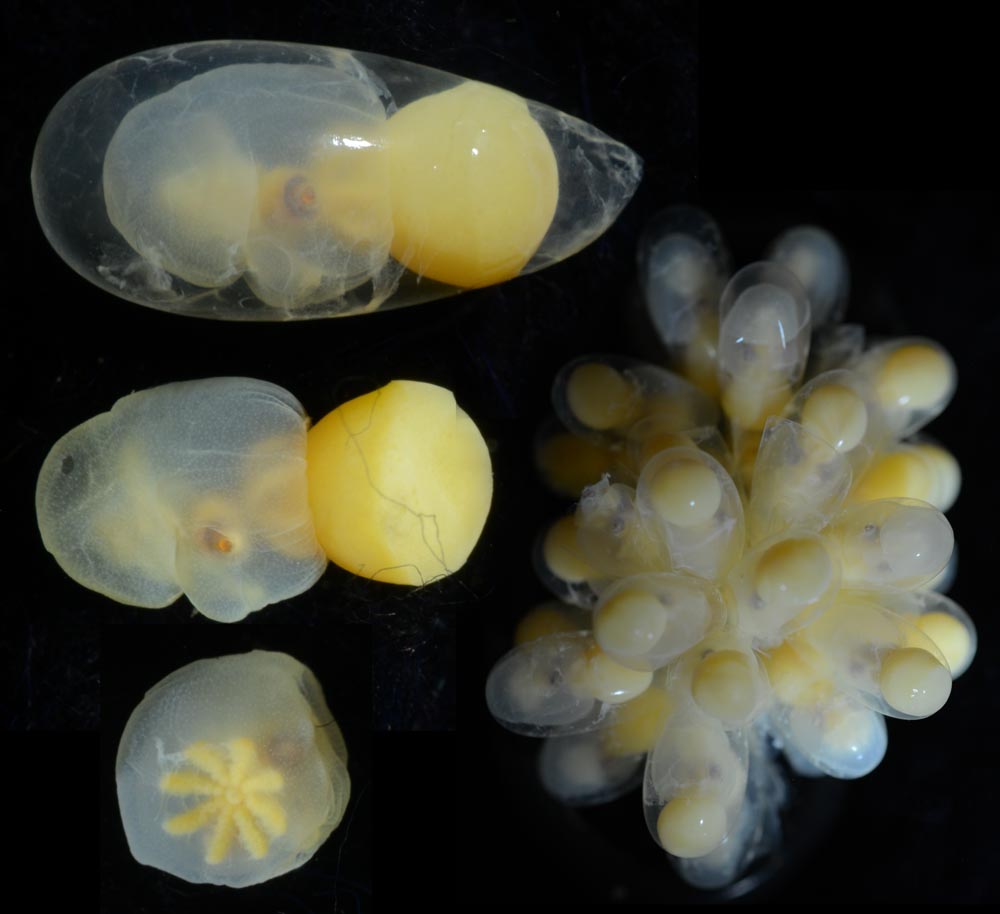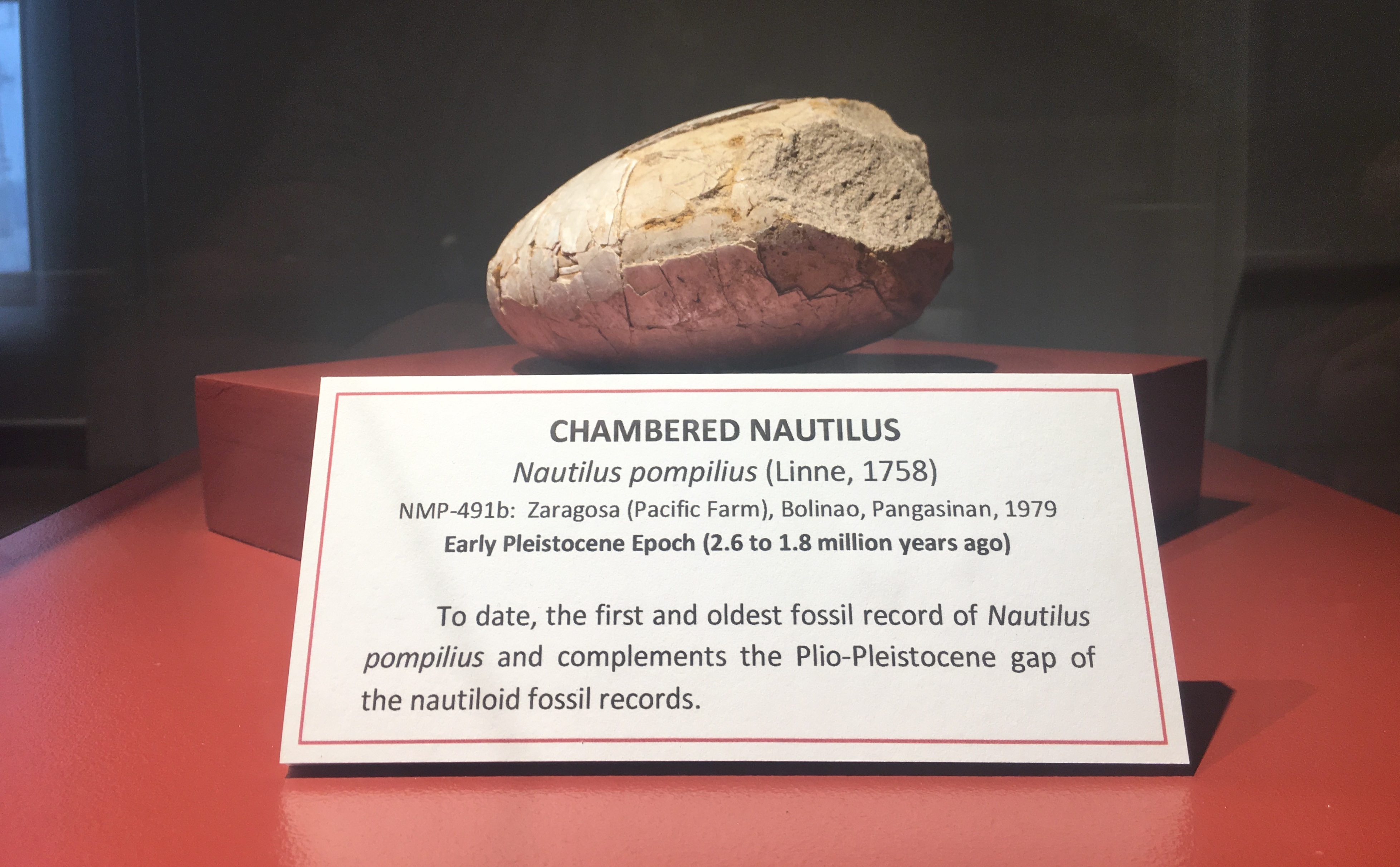|
Cephalopod Limb
All cephalopods possess flexible limbs extending from their heads and surrounding their beaks. These appendages, which function as muscular hydrostats, have been variously termed arms, legs or tentacles. Description In the scientific literature, a cephalopod ''arm'' is often treated as distinct from a '' tentacle'', though the terms are sometimes used interchangeably, often with the latter acting as an umbrella term for cephalopod limbs. Generally, arms have suckers along most of their length, as opposed to tentacles, which have suckers only near their ends.Young, R.E., M. Vecchione & K.M. Mangold 1999Cephalopoda Glossary Tree of Life web project. Barring a few exceptions, octopuses have eight arms and no tentacles, while squid and cuttlefish have eight arms (or two "legs" and six "arms") and two tentacles.Norman, M. 2000. ''Cephalopods: A World Guide''. ConchBooks, Hackenheim. p. 15. "There is some confusion around the terms ''arms'' versus ''tentacles''. The numerous ... [...More Info...] [...Related Items...] OR: [Wikipedia] [Google] [Baidu] |
Illex Illecebrosus
''Illex illecebrosus'', commonly known as the northern shortfin squid, is a species of Neritic zone, neritic squids in the Family (biology), family Ommastrephidae. Squids of the genus Illex account for 65% of the world's cephalopod captures. Illex is formed by four taxa distributed throughout the Atlantic Ocean (I. argentinus, I. coindetii, I. illecebrosus and I. oxygonius), whose identification and phylogenetic relationships based on morphological characters remain controversial.They are found in the northwest Atlantic Ocean, from off the coast of eastern North America to Greenland, Iceland, and west of Ireland and the United Kingdom. They are a highly migratory and short-lived species, with lifespans of less than a year. They are commercially important and are fished extensively (primarily by the United States and Canada), mostly for the Canadian and Japanese markets. Northern shortfin squid is a migratory species of squid with a distribution ranging from Florida Straits to New ... [...More Info...] [...Related Items...] OR: [Wikipedia] [Google] [Baidu] |
Tentacle
In zoology, a tentacle is a flexible, mobile, and elongated organ present in some species of animals, most of them invertebrates. In animal anatomy, tentacles usually occur in one or more pairs. Anatomically, the tentacles of animals work mainly like muscular hydrostats. Most forms of tentacles are used for grasping and feeding. Many are sensory organs, variously receptive to touch, vision, or to the smell or taste of particular foods or threats. Examples of such tentacles are the eyestalks of various kinds of snails. Some kinds of tentacles have both sensory and manipulatory functions. A tentacle is similar to a cirrus, but a cirrus is an organ that usually lacks the tentacle's strength, size, flexibility, or sensitivity. A nautilus has cirri, but a squid has tentacles. Invertebrates Molluscs Many molluscs have tentacles of one form or another. The most familiar are those of the pulmonate land snails, which usually have two sets of tentacles on the head: when ext ... [...More Info...] [...Related Items...] OR: [Wikipedia] [Google] [Baidu] |
Sucker (zoology)
A sucker in zoology is a specialised attachment organ of an animal. It acts as an adhesion device in parasitic worms, several flatworms, cephalopods, certain fishes, amphibians, and bats. It is a muscular structure for suction on a host or substrate. In parasitic annelids, flatworms and roundworms, suckers are the organs of attachment to the host tissues. In tapeworms and flukes, they are a parasitic adaptation for attachment on the internal tissues of the host, such as intestines and blood vessels. In roundworms and flatworms they serve as attachment between individuals particularly during mating. In annelids, a sucker can be both a functional mouth and a locomotory organ. The structure and number of suckers are often used as basic taxonomic diagnosis between different species, since they are unique in each species. In tapeworms there are two distinct classes of suckers, namely "bothridia" for true suckers, and " bothria" for false suckers. In digeneal flukes there are usuall ... [...More Info...] [...Related Items...] OR: [Wikipedia] [Google] [Baidu] |
Hydrostatic Pressure
Hydrostatics is the branch of fluid mechanics that studies fluids at hydrostatic equilibrium and "the pressure in a fluid or exerted by a fluid on an immersed body". The word "hydrostatics" is sometimes used to refer specifically to water and other liquids, but more often it includes both gases and liquids, whether Compressible flow, compressible or Incompressible flow, incompressible. It encompasses the study of the conditions under which fluids are at rest in Mechanical equilibrium, stable equilibrium. It is opposed to ''fluid dynamics'', the study of fluids in motion. Hydrostatics is fundamental to ''hydraulics'', the engineering of equipment for storing, transporting and using fluids. It is also relevant to geophysics and astrophysics (for example, in understanding plate tectonics and the anomalies of the Gravity of Earth, Earth's gravitational field), to meteorology, to medicine (in the context of blood pressure), and many other fields. Hydrostatics offers physical expl ... [...More Info...] [...Related Items...] OR: [Wikipedia] [Google] [Baidu] |
Collagen
Collagen () is the main structural protein in the extracellular matrix of the connective tissues of many animals. It is the most abundant protein in mammals, making up 25% to 35% of protein content. Amino acids are bound together to form a triple helix of elongated fibril known as a collagen helix. It is mostly found in cartilage, bones, tendons, ligaments, and skin. Vitamin C is vital for collagen synthesis. Depending on the degree of biomineralization, mineralization, collagen tissues may be rigid (bone) or compliant (tendon) or have a gradient from rigid to compliant (cartilage). Collagen is also abundant in corneas, blood vessels, the Gut (anatomy), gut, intervertebral discs, and the dentin in teeth. In muscle tissue, it serves as a major component of the endomysium. Collagen constitutes 1% to 2% of muscle tissue and 6% by weight of skeletal muscle. The fibroblast is the most common cell creating collagen in animals. Gelatin, which is used in food and industry, is collagen t ... [...More Info...] [...Related Items...] OR: [Wikipedia] [Google] [Baidu] |
Vampire Squid
The vampire squid (''Vampyroteuthis infernalis'', lit. 'vampire squid from hell') is a small cephalopod found throughout temperate and tropical oceans in extreme deep sea conditions. The vampire squid uses its bioluminescent organs and its unique oxygen metabolism to thrive in the parts of the ocean with the lowest concentrations of oxygen. It has two long retractile filaments, located between the first two pairs of arms on its dorsal side, which distinguish it from both octopuses and squids, and places it in its own order, Vampyromorphida, although its closest relatives are octopods. As a phylogenetic relict, it is the only known surviving member of its order. The first specimens were collected on the Valdivia Expedition and were originally described as an octopus in 1903 by German teuthologist Carl Chun, but later assigned to a new order together with several extinct taxa. Etymology The genus name ''Vampyroteuthis'' comes from Latin ''vampyrus'', meaning vampire, and Ancien ... [...More Info...] [...Related Items...] OR: [Wikipedia] [Google] [Baidu] |
Haliphron Atlanticus
The seven-arm octopus (''Haliphron atlanticus''), also known as the blob octopus or sometimes called septopus, is one of the two largest known species of octopus; the largest specimen ever discovered had an estimated total length of and mass of . The only other similarly large extant species is the giant Pacific octopus, ''Enteroctopus dofleini''. The genera ''Alloposina'' (Grimpe, 1922), ''Alloposus'' (Verrill, 1880) and ''Heptopus'' (Joubin, 1929) are junior synonyms of ''Haliphron'', a monotypic genus in the monotypic family Alloposidae, part of the superfamily Argonautoidea in the suborder Incirrata of the order Octopoda. Description The seven-arm octopus is so named because in males, the hectocotylus (a specially modified arm used in egg fertilization) is coiled in a sac beneath the right eye. Due to this species' thick, gelatinous tissue, the arm is easily overlooked, giving the appearance of just seven arms. However, like other octopuses, it actually has eight. Dis ... [...More Info...] [...Related Items...] OR: [Wikipedia] [Google] [Baidu] |
Hectocotylus
A hectocotylus (: hectocotyli) is one of the arms of male cephalopods that is specialized to store and transfer spermatophores to the female. Structurally, hectocotyli are muscular hydrostats. Depending on the species, the male may use it merely as a conduit to the female, analogously to a penis in other animals, or he may wrench it off and present it to the female. The hectocotyl arm was first described in Aristotle's biological works. Although Aristotle knew of its use in mating, he was doubtful that a tentacle could deliver sperm. The name ''hectocotylus'' was devised by Georges Cuvier, who first found one embedded in the mantle of a female argonaut. Thinking it to be a parasitic worm, in 1829 Cuvier gave it a generic name (''Hectocotyle''), which is a New Latin term combining the Greek words for "hundred" (''hec(a)to(n)'') and for "hollow thing, cup" ('' cotyle''). Structure Generalized anatomy of squid and octopod hectocotyli: Variability Hectocotyli are shaped i ... [...More Info...] [...Related Items...] OR: [Wikipedia] [Google] [Baidu] |
Coleoidea
Coleoidea or Dibranchiata is one of the two subclasses of cephalopod molluscs containing all the various taxa popularly thought of as "soft-bodied" or "shell-less" (i.e. octopus, squid and cuttlefish). Unlike its extant sister group Nautiloidea, whose members have a rigid outer shell for protection, the coleoids have at most an internal shell called cuttlebone or gladius that is used for buoyancy or as muscle anchorage. Some species, notably incirrate octopuses, have lost their internal shell altogether, while in some it has been replaced by a chitinous support structure. The major divisions of Coleoidea are based upon the number of arms or tentacles and their structure. The extinct and most primitive form, the Belemnoidea, presumably had ten equally-sized arms in five pairs numbered dorsal to ventral as I, II, III, IV and V. More modern species either modified or lost a pair of arms. The superorder Decapodiformes has arm pair IV modified into long tentacles w ... [...More Info...] [...Related Items...] OR: [Wikipedia] [Google] [Baidu] |
Decapodiformes
Decapodiformes is a superorder of Cephalopoda comprising all cephalopod species with ten limbs, specifically eight short arms and two long tentacles. It is hypothesized that the ancestral coleoid had five identical pairs of limbs, and that one branch of descendants evolved a modified arm pair IV to become the Decapodiformes, while another branch of descendants evolved and then eventually lost its arm pair II, becoming the Octopodiformes. Taxonomy The following orders are recognised in the superorder Decapodiformes: * Bathyteuthida * †Belemnitida * † Diplobelida * Idiosepida – pygmy squid * Myopsida – coastal squid * Oegopsida – neritic squid * Sepiida Cuttlefish, or cuttles, are marine molluscs of the suborder Sepiina. They belong to the class Cephalopoda which also includes squid, octopuses, and nautiluses. Cuttlefish have a unique internal shell, the cuttlebone, which is used for control ... – cuttlefish, bobtail and bottletail squid * Spirulida – ram's ... [...More Info...] [...Related Items...] OR: [Wikipedia] [Google] [Baidu] |
Nautilus
A nautilus (; ) is any of the various species within the cephalopod family Nautilidae. This is the sole extant family of the superfamily Nautilaceae and the suborder Nautilina. It comprises nine living species in two genera, the type genus, type of which is the genus ''Nautilus (genus), Nautilus''. Though it more specifically refers to the species ''chambered nautilus, Nautilus pompilius'', the name chambered nautilus is also used for any of the Nautilidae. All are protected under CITES CITES Appendix II, Appendix II. Depending on species, adult shell diameter is between . The Nautilidae, both extant and extinct, are characterized by involute or more or less convoluted shells that are generally smooth, with compressed or depressed whorl (mollusc), whorl sections, straight to sinuous Suture (anatomy), sutures, and a tubular, generally central siphuncle.Kümmel, B. 1964. Nautiloidae-Nautilida, in the Treatise on Invertebrate Paleontology, Geological Society of America and Univ of ... [...More Info...] [...Related Items...] OR: [Wikipedia] [Google] [Baidu] |
Cuttlefish
Cuttlefish, or cuttles, are Marine (ocean), marine Mollusca, molluscs of the order (biology), suborder Sepiina. They belong to the class (biology), class Cephalopoda which also includes squid, octopuses, and nautiluses. Cuttlefish have a unique internal mollusc shell, shell, the cuttlebone, which is used for control of buoyancy. Cuttlefish have large, W-shaped pupils, eight Cephalopod arm, arms, and two tentacles furnished with :wikt:denticulate, denticulated suckers, with which they secure their prey. They generally range in size from , with Cephalopod size, the largest species, the giant cuttlefish (''Sepia apama''), reaching in mantle (mollusc), mantle length and over in mass. Cuttlefish eat small molluscs, crabs, shrimp, fish, octopuses, worms, and other cuttlefish. Their predators include dolphins, larger fish (including sharks), seals, seabirds, and other cuttlefish. The typical life expectancy of a cuttlefish is about 1–2 years. Studies are said to indicate cuttlefis ... [...More Info...] [...Related Items...] OR: [Wikipedia] [Google] [Baidu] |









